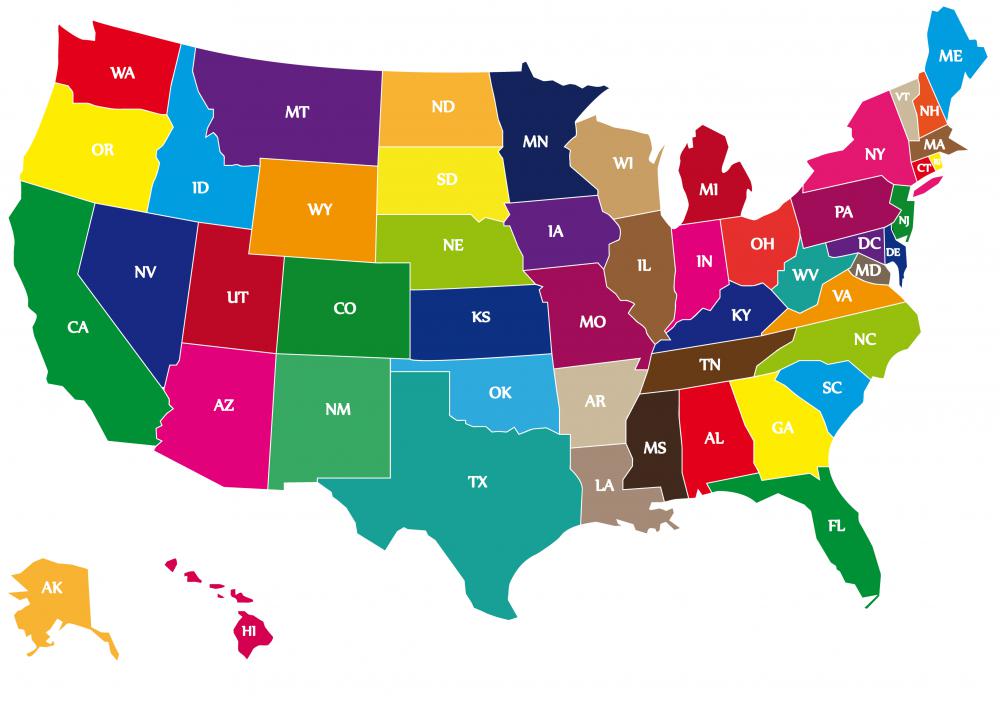At HomeQuestionsAnswered, we're committed to delivering accurate, trustworthy information. Our expert-authored content is rigorously fact-checked and sourced from credible authorities. Discover how we uphold the highest standards in providing you with reliable knowledge.
What is a Yucca Tree?
A yucca tree is a desert tree species that has several different subtypes, and is commonly seen in outdoor landscaping, or even as an house plant. These trees are somewhat reminiscent of palm trees, often having only green vegetation at the top, where the green crowns look like thin palm fronds. Depending on its species, a yucca tree can be a long-lived tree variety. One in particular, called the Joshua tree, can live as many as 1,000 years.
In the native environment, the yucca tree is found in Arizona, New Mexico, Utah, Nevada, and Texas. As a desert plant, it exhibits some of the common characteristics of many such plants, such as being drought resistant, but not being fire resistant. They can withstand colder temperatures for brief periods of time, but prefer hot, sunny locations for optimum growth and vegetation.

Depending on the variety, the yucca tree may have one stalk or multiple stalks. They can also be pruned to produce fewer stalks, if that is the desire of the tree's owner. Thus, the yucca tree can provide the owner with a wide variety of looks, even among trees of the same species. This is one factor that helps to make the trees one of the most favored in the home environment.

More than their versatility, however, these trees are a favorite of gardeners and home hobbyists simply because they are so easy to take care of. Once it is planted, the biggest threat to the yucca tree is watering it too much. It will not require fertilizer, and may even react negatively if a fertilizer is introduced. Further, the spineless yucca is more like a yucca plant than a tree in that it generally does not grow more than eight feet (2.4 meters tall) depending on the type of container it is in.
One thing the owner of a yucca tree needs to be aware of is the potential for the species to be affected by a variety of pests. Mites and rabbits can cause the most damage, though this is generally restricted to those plants that are kept outdoors. Some mites may be able to find their way indoors, so checking for speckled or discolored foliage periodically is a good idea.
If possible, it is also best to protect the yucca tree from freezes when they happen. Doing so in container plants is easy simply by bringing them indoors. With outdoor plants, it is more of a challenge to protect them from the elements. Using blankets and even a light under the blanket can help provide warmth to keep the tree out of danger on such nights.
AS FEATURED ON:
AS FEATURED ON:












Discussion Comments
Can the leaves on the yucca plant hurt dogs if they chew on the leaves?
@earlyforest -- You're in luck, caring for an indoor yucca is really quite simple. As long as you follow a few tips, you'll have no problems.
First, you need to make sure that you place the tree in a place that is warm and in full view of sunlight. Yuccas are hot-weather plants, and they tend to get sickly if they get too cold, so make sure that you place it where it can get enough light and heat.
Next, you have to be careful not to overwater it. It's best to pot your yucca in rather sandy soil, or soil that has some rocks at the bottom, much like you would for a cactus.
When you're checking the tree's moisture level, make sure you feel at the base of the tree, rather than at the edges of the pot. You should only water your yucca when the first 1/4 inch of soil is dry, otherwise you could overwater it. And when you water it, water it at the bottom of the pot, rather than on top of the plant.
Finally, you can prune off any dead leaves to promote growth, but you shouldn't use a fertilizer with the tree -- yuccas just don't need it. Also, you'll know if you're overwatering if you start to get yellow spots on the tree or brown spots on the leaves. That's pretty much all you need to look out for though -- other than that, you should be good to go!
Best of luck.
Can you give me any good tips on growing a yucca tree inside? My grandmother is always pushing me to get some trees and shrubs, even though I live in an apartment, so I finally caved and went for a yucca.
Unfortunately, I really have no idea how to care for such a thing. So can you give me any good tips? I've only worked with flowering trees before, so I'm not much up on the spiky kinds of trees.
Any help?
Wait, yuccas are trees? I always thought that a yucca was a plant. Huh, the things you learn every day.
I guess I never really associated yuccas with other kinds of trees, since you don't really see yuccas used as landscaping trees. Or at least you don't in my area.
Now that I've read this article though, I'm kind of tempted to buy a yucca tree -- it sounds like they're really quite interesting.
If I can just find a dwarf yucca tree for my apartment, that would be perfect. Do you know if they make things like that?
Post your comments